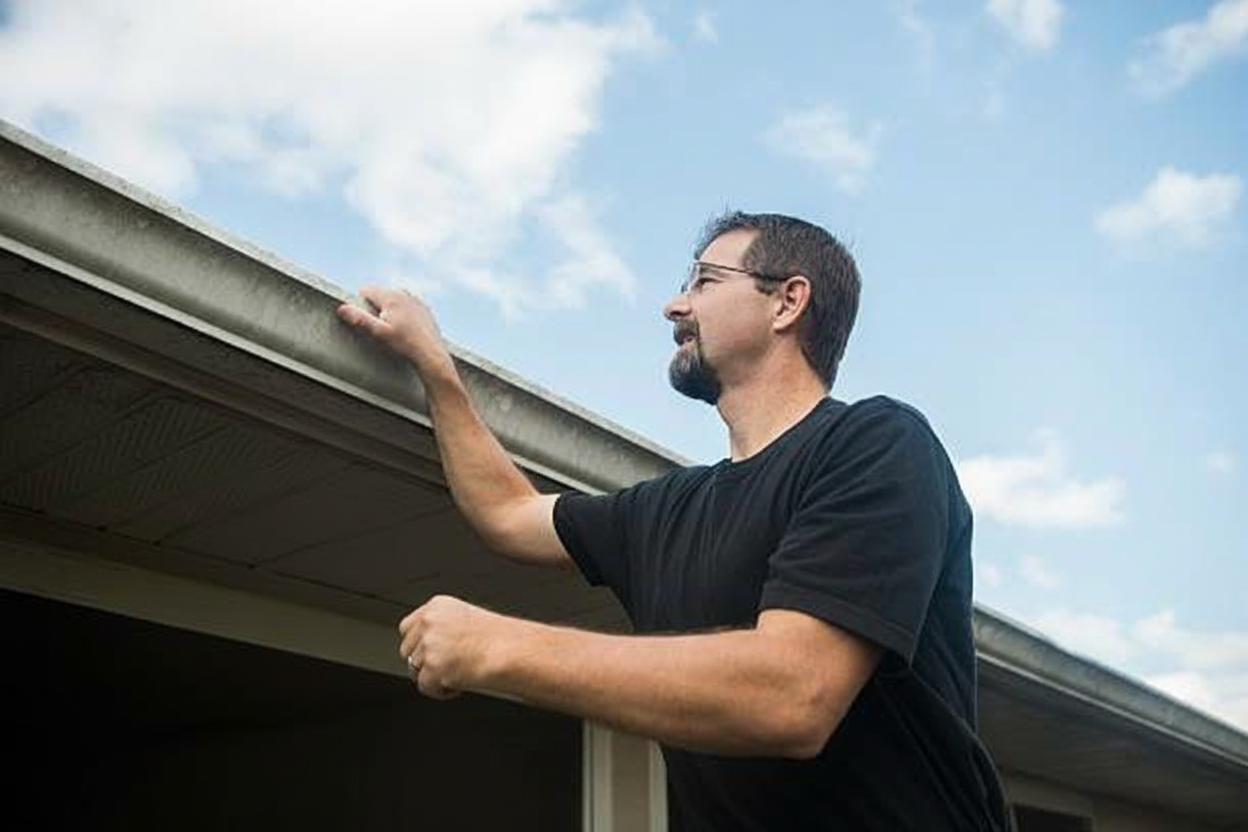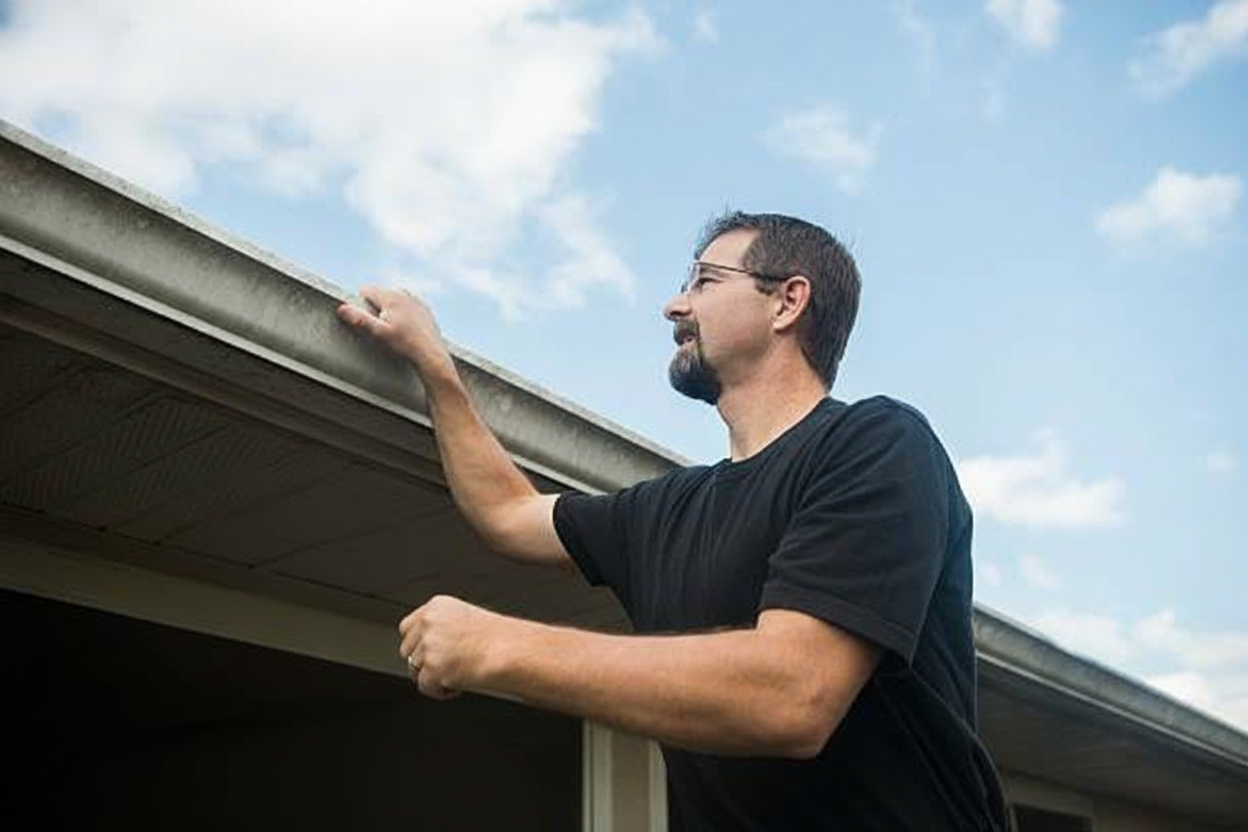
Florida Roof Inspections In 2025: Protect Your Home And Save Thousands
Florida-Specific Roofing & Climate Challenges
October 9,2025
Florida roof inspections in 2025: protect your home and save thousands

Alt text: Professional roof inspector on ladder examining shingles on Florida home during inspection
When did you last have a professional inspect your roof? If you cannot remember, you are not alone. Most Florida homeowners forget about their roofs until a leak appears or shingles fly off during a storm. By then, repairs cost thousands more than they should have.
Regular roof inspections are the single most effective way to extend your roof’s life and avoid expensive emergency repairs in Florida’s harsh climate.
In Florida, your roof faces relentless sun, torrential rain, high humidity, and hurricane-force winds. These conditions accelerate wear and tear faster than almost anywhere else in the country. A small crack or loose shingle that might last years in a milder climate can become a major problem in just months here.
Catching one major issue early through a routine inspection can save you $5,000 to $15,000 in emergency repairs or premature replacement costs.
This guide shows you exactly why inspections matter, what they catch, how much you save, and when to schedule them.
Why Florida roofs need twice-yearly inspections
Florida’s climate creates unique challenges that make regular inspections essential, not optional.
Hurricanes and tropical storms test every component of your roofing system. High winds can lift shingles, loosen tiles, and expose vulnerable areas. Even if your home looks fine after a storm, hidden damage often exists beneath the surface. Preparation for hurricane season starts with knowing your roof’s current condition.
Heavy rainfall overwhelms drainage systems and finds any weak point in your roof. Standing water accelerates deterioration and leads to leaks that damage insulation, drywall, and structural components. Florida’s rainy season can turn a small vulnerability into a major problem fast.
Intense UV exposure breaks down roofing materials year-round. The sun’s rays degrade shingles, fade tiles, and weaken protective coatings. Without regular checks, you will not know your roof is failing until it leaks.
High humidity promotes mold, algae, and rot. Humidity damages roofs by creating conditions where organic growth thrives and wood components deteriorate faster.
Salt air in coastal areas corrodes metal components and accelerates wear on all materials. If you live near the coast, coastal air damage affects your roof every single day.
These factors combine to create the perfect storm for roof deterioration. Regular inspections catch problems while they are still small and inexpensive to fix.
What professional roof inspections catch before damage spreads
A trained inspector knows exactly where to look and what warning signs matter most.
Hidden leaks often go unnoticed until water stains appear on your ceiling. By then, you may have rot in your decking or insulation. Inspectors use moisture meters and visual checks to find leaks before they cause structural damage.
Missing or damaged shingles create entry points for water. Replacing a few shingles costs hundreds of dollars. Ignoring them can lead to a full roof replacement costing thousands. Inspectors check every section of your roof for loose, cracked, or missing shingles.
Cracked tiles may look minor but allow water penetration that spreads to adjacent tiles and underlying materials. Early detection prevents cascade failures that require extensive tile replacement.
Flashing failures around chimneys, vents, and roof edges are common weak points. Inspectors verify that all flashing remains sealed and properly attached.
Ventilation problems trap heat and moisture in your attic, reducing your roof’s lifespan and increasing cooling costs. Proper airflow keeps your roof healthy from the inside out.
Structural concerns like sagging areas or compromised decking indicate serious problems that worsen over time. Inspectors assess your roof’s structural integrity and recommend repairs before failure occurs.
Granule loss on shingles signals that your shingles are nearing the end of their useful life. Knowing this in advance lets you budget for replacement on your schedule, not during an emergency.
How much roof inspections actually save you
The numbers tell a clear story: preventive inspections cost a fraction of what you pay for repairs or replacements.
| Service | Average cost | Notes |
|---|---|---|
| Professional inspection | $200 to $400 | Recommended twice yearly |
| Minor repairs (flashing, shingles) | $300 to $1,200 | Fixes caught early |
| Major leak repair | $1,500 to $4,000 | Water damage spreads fast |
| Partial roof replacement | $5,000 to $12,000 | One section fails |
| Complete roof replacement | $15,000 to $35,000 | Full system failure |
A $300 inspection twice a year costs $600 annually. That investment protects you from five-figure replacement costs and extends your roof’s life by years.
Insurance benefits: Many insurance companies require proof of regular maintenance to honor claims after storms. Documented inspections protect your coverage when you need it most. After storm damage occurs, having inspection records strengthens your claim.
Energy savings: A well-maintained roof with proper ventilation reduces cooling costs. Inspectors identify efficiency problems that cost you money every month on your electric bill.
Extended lifespan: Regular maintenance can add 10 to 15 years to your roof’s life. Delaying a $25,000 replacement by even five years saves you thousands in present value.

Alt text: Homeowner and Foxhaven roofing contractor discussing roof inspection report on tablet
When to schedule inspections and what to do between them
Timing your inspections correctly maximizes protection and catches seasonal issues early.
Spring inspections (March to May) assess winter damage and prepare your roof for rainy season. This is the ideal time to catch problems before summer storms arrive.
Fall inspections (September to November) verify your roof is ready for hurricane season and identify damage from summer heat. Hurricane roof preparation depends on knowing your roof’s current condition.
After major storms, schedule an inspection even if you see no obvious damage. Wind damage and hail damage often hide beneath the surface.
Schedule your next inspection before hurricane season starts. Waiting until storms approach means contractors are booked solid and cannot help you prepare.
Between inspections, you can protect your investment:
- Clear debris from gutters and roof surfaces monthly
- Trim tree branches that hang over your roof
- Check your attic for signs of leaks after heavy rain
- Look for signs of storm damage after severe weather
- Remove mold and algae growth as soon as you spot it
Working with Foxhaven: At Foxhaven, we provide comprehensive inspections tailored to Florida’s climate challenges. Our inspectors document every finding with photos and detailed reports. We explain exactly what needs attention now versus what to monitor for the future. You get honest recommendations without pressure, helping you make informed decisions about your home’s protection.
We serve homeowners throughout South Florida with the same commitment to quality and transparency. When you choose Foxhaven, you get a partner who understands Florida roofing inside and out.
